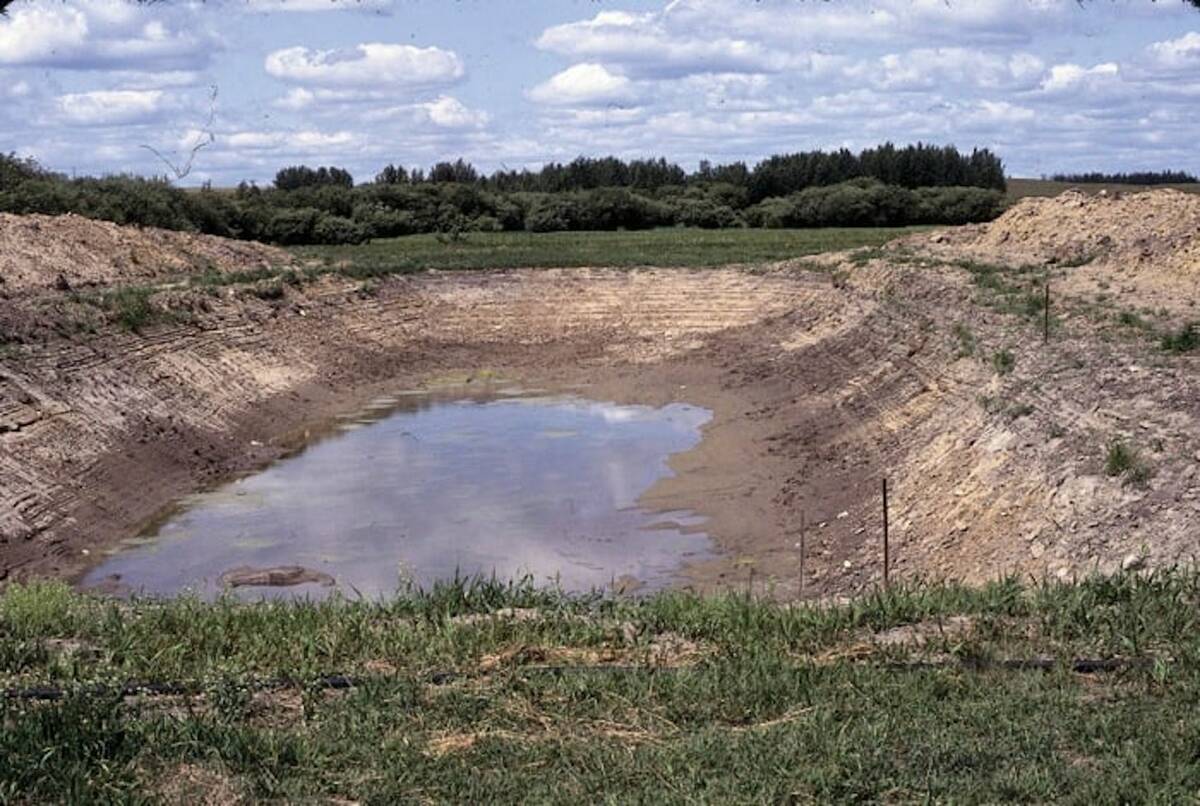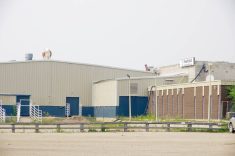FORT MACLEOD, Alta. – After 1,500 kilometres of variable weather and a feeling his bones were as creaky as his wagon’s wheels, Jim Baldock is ready for his next adventure.
He has to find his camper trailer left behind in Medicine Hat, Alta., after it broke down on the journey west to Fort Macleod to commemorate the 125th anniversary of the North-West Mounted Police ride west. The NWMP later became the RCMP.
The semi-retired farmer from Killarney, Man., made the entire journey by wagon as a personal quest to savor history and test himself.
Read Also

Dry summer conditions can lead to poor water quality for livestock
Drought conditions in the Prairies has led to an decrease in water quality, and producers are being advised to closely monitor water quality for their animals.
“I wanted to see if I could make it,” he said, rubbing day-old stubble on his wind-burnt face.
While his camper broke down, he finished the trip in good shape after sticking it out for the entire ride, which started at Emerson, Man., May 3 and ended in this southwestern Alberta town July 3.
“You get toughened up after a few days.”
While most of the trip was fun, traveling was difficult at times. They rode into rain most days, hit a few hailstorms and watched funnel clouds come close in Saskatchewan. At some points, there was so much mud, wagon wheels could not turn. Wind in Alberta burned their faces and left their lips feeling raw.
But there are no regrets for Baldock.
The historical ride drew riders from all over North America. Although it could accommodate 500 people, the ride never swelled beyond about 150.
“It was the opportunity of a lifetime,” said Baldock.
Heading north
RCMP Cpl. Jerry McCarty of Ottawa, joined the ride at Medicine Hat and is leading the march north heading to Fort Saskatchewan, near Edmonton, by July 23.
Five RCMP constables made the entire trip from Manitoba.
An instructor with the RCMP musical ride for the last 20 years, McCarty has been with the force for 28 years.
“It’s good when you can put your job with your hobby together,” he said.
Deb Voth and her Palomino Beauty, rode for three weeks in Manitoba and linked up again in Alberta for the last three days of the ride.
A farmer from Medora, Man., Voth loved everything from sleeping in frost-coated tents to the catered meals at every checkpoint.
“I wouldn’t have missed it for the world.”
“I love horses, I love riding and I love history,” she said.
She was joined by Glen and Cindy Forsythe of Waskada, Man., who rode in Manitoba and also rejoined in Alberta.
The three were sponsored by their communities and their made-to-order uniforms included white pith helmets, red serge jackets and shiny black boots with spurs.
The red serge will be donated to local museums, said Cindy Forsythe.
After a parade down the main street of Fort Macleod, Voth was preparing to load Beauty and herself into a truck for the 11-hour trip back to Manitoba.
Tough going
It was not so easy the first time around for the 300 men who set out from Manitoba to bring law and order to what was then the Northwest Territories.
With orders to protect the Dominion’s western interests and chase out whiskey traders sneaking up from south of the 49th parallel, troops A to F set out July 8, 1874.
They started with 114 ox carts, 310 horses, 22 officers, 287 men, 33 cattle and weaponry.
About 120 men arrived on Oct. 13, 1874 at a small Metis settlement and trading post that would eventually become Fort Macleod.
The A Troop had already split off at Cypress Hills to head for Fort Edmonton where they hoped to find shelter and rest.
The southern Alberta site beside the Oldman River was selected because there were trees, water and shelter. The troops also knew they could go no further north before winter set in.
The lonely, desolate landscape was deadly for men and horses who contended with mosquitoes, starvation and a lack of water. Horses died and men became sick.
Their red coats and pillbox hats proved impractical for western conditions and many of their horses did not have the stamina required for a trek across untamed country.
The diary of Henri Julian, a newspaper reporter and the only civilian on the original journey, revealed a fascination with the prairies in the early days followed by boredom and restlessness.
“The effect of this loneliness upon the imagination is very singular,” wrote Julian.
“The eye dwells on vacancy, tired of glancing at the blue sky above or the brown earth beneath. A feeling of weariness creeps over you, interrupted by vague longings for something beyond the horizon, which is ever barred across your vision. The silence is oppressing.”

















